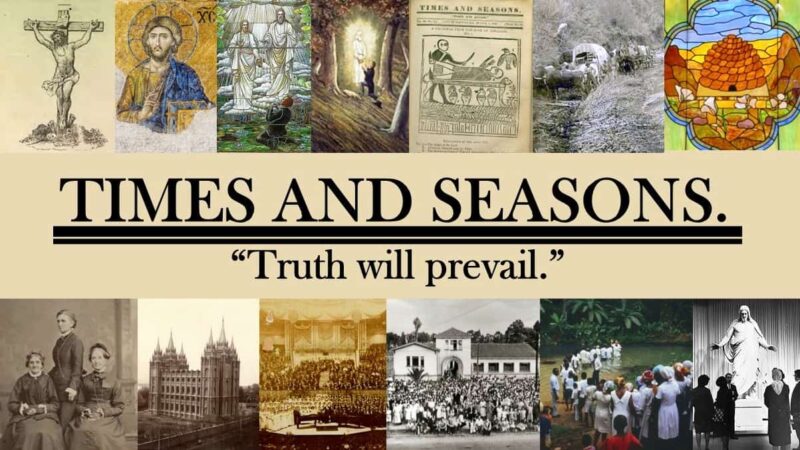A recent interview with historian Max Perry Mueller over at the Latter-day Saint history blog, From the Desk, does the hard work of re-centering a figure many of us know only by name, if at all: the Ute war leader Wakara. Mueller argues compellingly that Wakara was not just a side character in the pioneer story but a “Native founder” of the West, whose legacy—including his complex role in the Native slave trade and his tangled relationship with the Saints—was deliberately erased from our history. The interview digs into several aspects of this history, including the nature of the so-called “Walker War.”
To start, Max Perry Mueller addressed the question of who Chief Wakara even was:
Wakara (c. 1815–1855), a Timpanogos Ute leader known to most Anglo-Americans as Walker, deserves recognition as one of the West’s founding figures, alongside Brigham Young and Junípero Serra. Like them, Wakara built trade routes and industries, oversaw new settlements, and shaped the region’s political and geographic boundaries.
And like them, Wakara often did so through violence—including the enslavement of Native Americans.
Equally important, Wakara defended Native territory and, at times, Native lives. Like Crazy Horse of the Lakota and the Sauk leader Black Hawk, Wakara’s Utes pan-tribal warriors stalled and briefly reversed settler expansion.
Similar to his fellow Ute leader Ouray, Wakara also pursued peace and trade negotiations in hopes of limiting colonial encroachment and protecting Ute homelands.
By the mid-nineteenth century, Wakara and his pan-tribal cavalry of horse raiders and slave traders dominated the Old Spanish Trail. They exacted tribute from travelers along what was then the region’s most important overland route and sold their services to explorers like John C. Frémont, assisting with mapmaking—for a price.
Through his horse raiding and Indian slave trading in the 1830s and 1840s, Wakara supplied Spanish, Mexican, and Anglo-American settlers from Santa Fe to San Bernardino with the human labor and horsepower that fueled their empires and colonial projects.
Wakara left a complex legacy through his actions, one that helped to give shape to the western United States as we know it today.
Of course, central to the discussion for Latter-day Saints is Wakara’s interactions with the Church of Jesus Christ of Latter-day Saints:
Wakara was not simply a bystander to Mormon expansion—he was both a key partner in its early growth and one of its fiercest opponents. Starting in the late 1840s, Wakara became one of the most influential forces in the colonization and Christianization of the West.
Soon after the Latter-day Saints arrived in the Great Basin in 1847, Wakara struck a bargain with Brigham Young: in exchange for Mormon cattle, guns, foodstuffs, and promises to buy his horses and enslaved Indians, Wakara approved and oversaw the establishment of the first Mormon settlements outside the Salt Lake Valley. …
Both Brigham Young and Wakara saw themselves as the most powerful men in the Great Basin. Between 1847 and Wakara’s death in 1855, they alternately partnered and clashed in pursuit of greater power.
Wakara aided the Latter-day Saints in settling the Sanpitch Valley and permitted settlements along the Old Spanish Trail. His aim in these alliances was to expand his trading network, adding new markets for horses and enslaved people.
Thus, Wakara worked to use Latter-day Saint settlement in the region to his advantage, having them settle in his rival’s territory and taking advantage of their settlements as markets for the trades he participated in. At the same time, however, he did fight back when the Latter-day Saints threatened his own people and interests:
He also became one of the West’s greatest defenders of Native sovereignty. Soon after their arrival, the Mormons began to destroy his band’s sacred hunting and fishing grounds and tried to usurp his slave trade. Wakara’s Utes began an uprising against the Mormons (the so-called Walker War), which temporarily reversed colonial expansion.
However, Mueller pointed out that calling the conflict the “Walker War” is a bit of a misnomer:
Wakara’s background with Brigham Young illustrates that it is wrong to blame Wakara for the so-called Walker War.
During the 1853–54 conflict, Wakara was often hundreds of miles away from the fighting between the Nauvoo Legion and the Ute bands. Apart from the initial violent dispute over a failed fish trade, Wakara did not take part in the cycle of revenge raids—Ute strikes met by Mormon attacks not only on Utes but also on other, often uninvolved, Native communities. …
In truth, Young and other Mormon leaders waged war on Utah’s Native peoples from the earliest years of settlement to well into the early twentieth century. For that reason, I call this decades-long campaign that changed the lives of the Utes “Brigham’s War.”
Parley P. Pratt infamously urged that it was best to “go and kill” Native men, enslave women and children, and “make them do what we want.”
A handful might be redeemed through Mormon “adoption” and indenture, but most were to be “exterminated.”
On this, Parley Pratt, Brigham Young, and other early leaders agreed.
This doesn’t mean, however, that Wakara was completely uninvolved in the conflict:
Wakara did use the peace treaty that ended the war to renegotiate the terms of his relationship with Young, including extracting more trade goods from and promises that the Mormons would not encroach further into his lands without Wakara’s blessing.
Young did not keep this promise long. He didn’t have to, as Wakara died soon after the peace deal was made.
This unexpected death cut Wakara’s time short, but he still left a notable legacy through his life and influence.
For more on Wakara and the interactions between Latter-day Saints and Native Americans in Utah, head on over to read the full interview at From the Desk. While there, check out the new D. Todd Christofferson quotes page, honoring his call to the First Presidency. Also, stay tuned: I will be publishing my review of Mueller’s Wakara biography next week!
